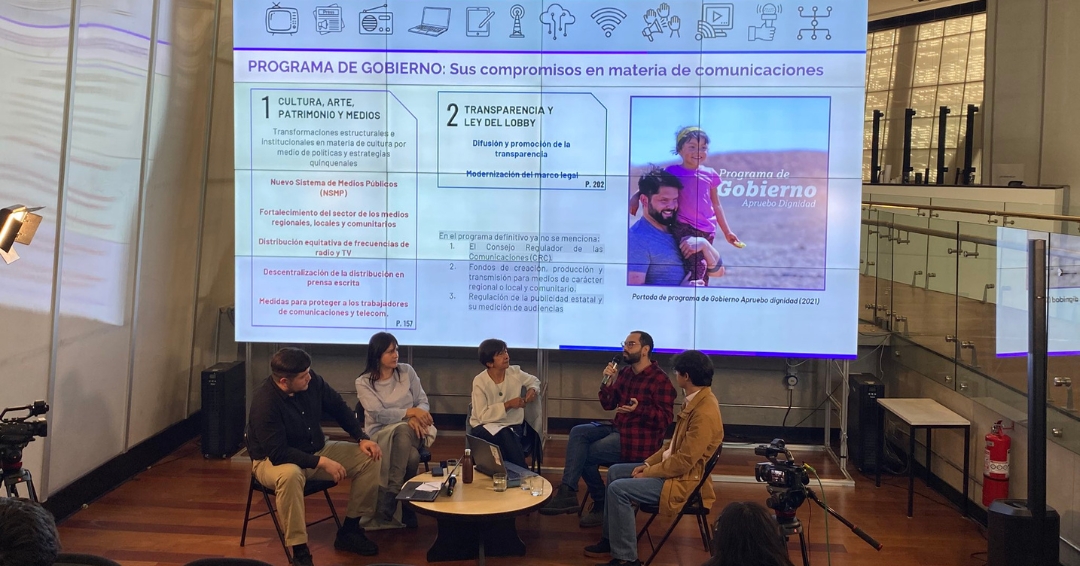The analogue switch-off in Chile will be carried out from March 13th to April 15th. This means the end of broadcast television’s transition from analogue to digital technology, a period that lasted four more years than originally planned but which has allowed channels -and viewers- to take the necessary measures to adapt to this change. It is the end of a process whose first milestone was the bill submitted by President Bachelet in 2008, which was enacted in May 2014.
In the public debate around digital television, this was considered not only a technological change but also an opportunity for a substantial improvement of the television industry. The promises included “greater cultural and information pluralism and diversity; proper television expression of regional, local and community issues and identity; the development of the overall cultural and content industry” or “a television that measures up to today’s challenges from the perspective of pluralism and inclusion”.
However, after a decade of implementation, noteworthy developments in this regard are rather imperceptible. For instance, to date, there are no new nationwide commercial digital TV channels beyond the second signals of already existing channels. With the exception of TVN’s educational signal and Universidad de Chile’s channel in the frequency it rents from Chilevisión, in general, second signals have become new screens for old contents from the same channels.
Regarding local and regional television, in a qualitative study conducted in 2021-2022 with executives and editors from the sector, , when asked about the existence of any type of impact of the digitalization process of broadcast television on pluralism, all interviewees from regional channels replied negatively, stating that citizens in general are unaware of the access, uses and benefits of digital TV, there is a persistent lack of interest by public institutions in educating about the subject and the analogue switch-off delay has hindered the audiences’ transition to digitalization.
In the case of local channels, there was a little more optimism, but also some reservations. They were concerned about the audiences’ lack of education on the digitalization of TV and that some aspects of the law that were beneficial for the sector have been implemented slowly or in a problematic way, such as the must-carry. As for community TV, the hard fact is that there are only five assigned concessions, all of them in 2018. The awarding of eight more frequencies in this category was published in the official journal on March 15th, but their granting is still pending.
Returning to the specific subject of the switch-off, the main risk today is that the State does not have sufficiently exhaustive and updated data of its own regarding the level of digitalization of television sets, particularly in remote and isolated sectors, in poorer areas and among senior citizens, and the switch-off may generate a new aspect of digital exclusion, especially in social and geographic sectors where connection with the national reality and contingency is mainly or exclusively through broadcast television. The whole country does not have the same level of connectivity as Sanhattan. Sanhattan.
In spite of this, there are no known measures adopted by the State regarding the digital exclusion of audiences this situation could cause. Research of international cases of digital television implementation by Albornoz and García Leiva (2012) mentioned countries where forms of subsidy were observed in relation to the acquisition of devices or decoders, such as the Coupon Program in the United States and Eco Points in Japan.
At the other end of the spectrum, they mentioned the case of China, where there was a risk of leaving the rural and/or very poor population out of the process, which at the time was at least 160 million people (in the analogue context, there were already 40 million Chinese who did not access any broadcast television signals). A more recent and closer case is Argentina, which in the context of the switch-off implemented an aid plan in 2022 for vulnerable audiences that could not afford the conversion or substitution of their television sets (Decree 156/2022).
The existence of a public campaign informing about the process, its implications and possible difficulties would have been a good preventive measure. In this sense, we can only hope that the switch-off is carried out without controversy and that the substantial changes promised by the technological change can be observed one day.
Por Chiara Sáez, marzo de 2024.
Listen to this editorial below (in spanish):


